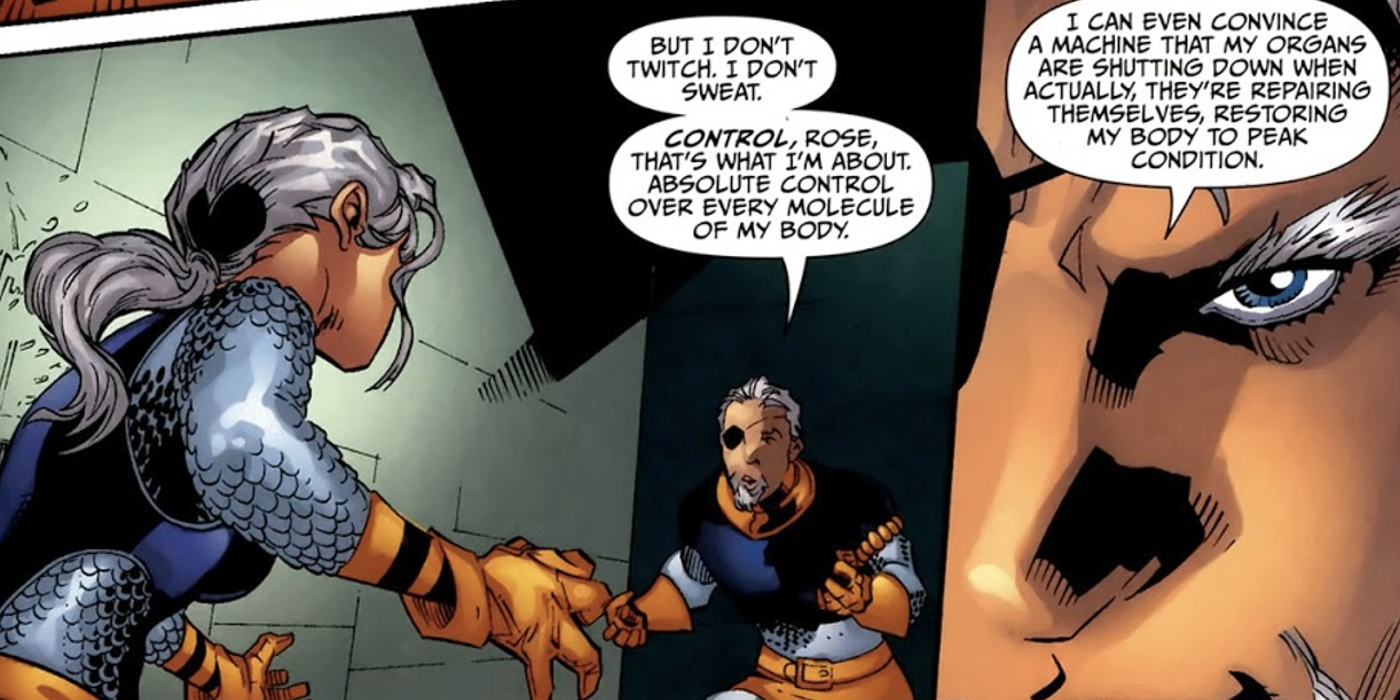Both Deathstroke and Wolverine exhibit impressive healing factors. But while Wolverine’s is more all-encompassing, Deathstroke’s is better in one unique way. A good example of this can be found in the 2009 one-shot Faces of Evil: Deathstroke. The issue comes from David Hine, Georges Jeanty, Mark McKenna, Pat Brosseau, and Jo Smith.
In the DC Universe, Deathstroke is considered one of the deadliest assassins and one of the most hardened mercenaries. After joining the army very young and rising through its ranks, he was subjected to experimentation that activated a latent metagene. This gene gave him powers such as enhanced reflexes, strength, intelligence, and a healing factor with extraordinary regenerative capabilities. This is in contrast to the mutant Wolverine in the Marvel Universe, whose X-Gene never needed to be manually activated. His powers simply manifested in adolescence during a time of great stress.
In Faces of Evil: Deathstroke, Slade Wilson is left in a coma following a battle with Geo-Force. Slade took a sword straight through his heart, practically splitting it in two. Any normal man would have died immediately, but Deathstroke's healing factor keeps him alive. When he awakes from the coma though, those in charge of his incarceration learn that his healing factor has begun working in reverse. They believe Slade has lost the will to live and has begun consciously shutting down his body. Of course, that's just what he wants them to think.
In reality, this was just a ploy used by Deathstroke to lure his daughter to visit him. Slade has such control over his healing factor that he could not just mislead the medical machinery monitoring him, but rebuild his body at the same time. Wolverine's healing factor is much stronger than Deathstroke’s, but it acts subconsciously. Wolverine has no control over how and when his body regenerates, and this can have huge downsides, allowing his enemies to predict his behavior and even trapping him in inescapable situations (his son Daken has been vulnerable to this in the past, impaled in place and unable to escape.) Weapon X used Wolverine's healing factor to subject him to horrific experiments, and some stories have suggested his healing has even robbed him of important memories.
When analyzing these two characters, it's sort of fitting that their healing factors work the way they do. Deathstroke is more of a soldier than Wolverine. He's a strategist and works tactically, so having complete control over his healing factor allows him to employ his genius mind in order to defeat his opponents. By contrast, Wolverine is more of a feral, animalistic fighter. He attacks on instinct and uses his natural, unhindered rage to his advantage. That's probably why his healing factor works the way it does. Wolverine at his core is a creature of nature, so it is only fitting that his impressive healing factor works as a force of nature compared to Deathstroke's tactical approach to the same power.


